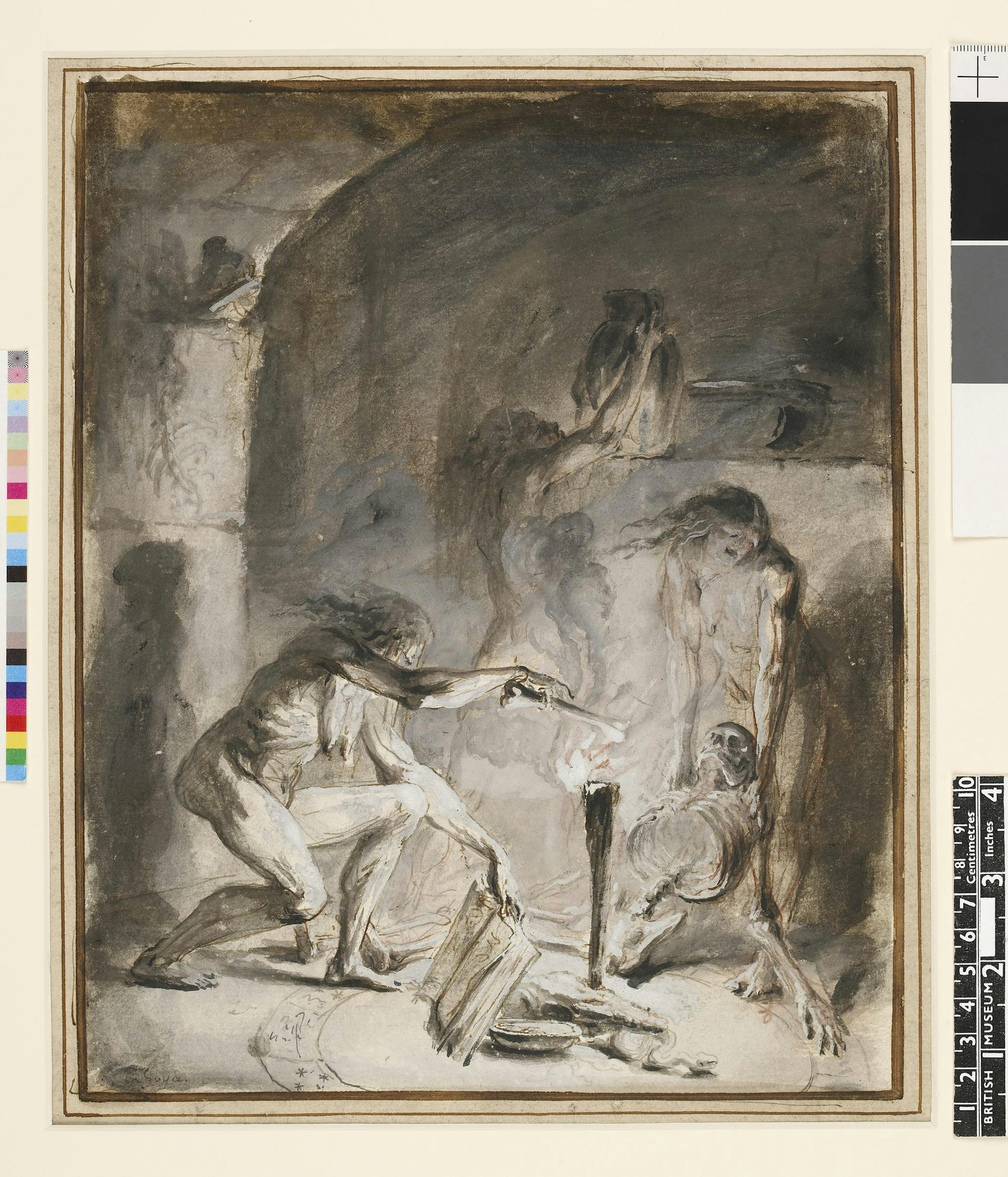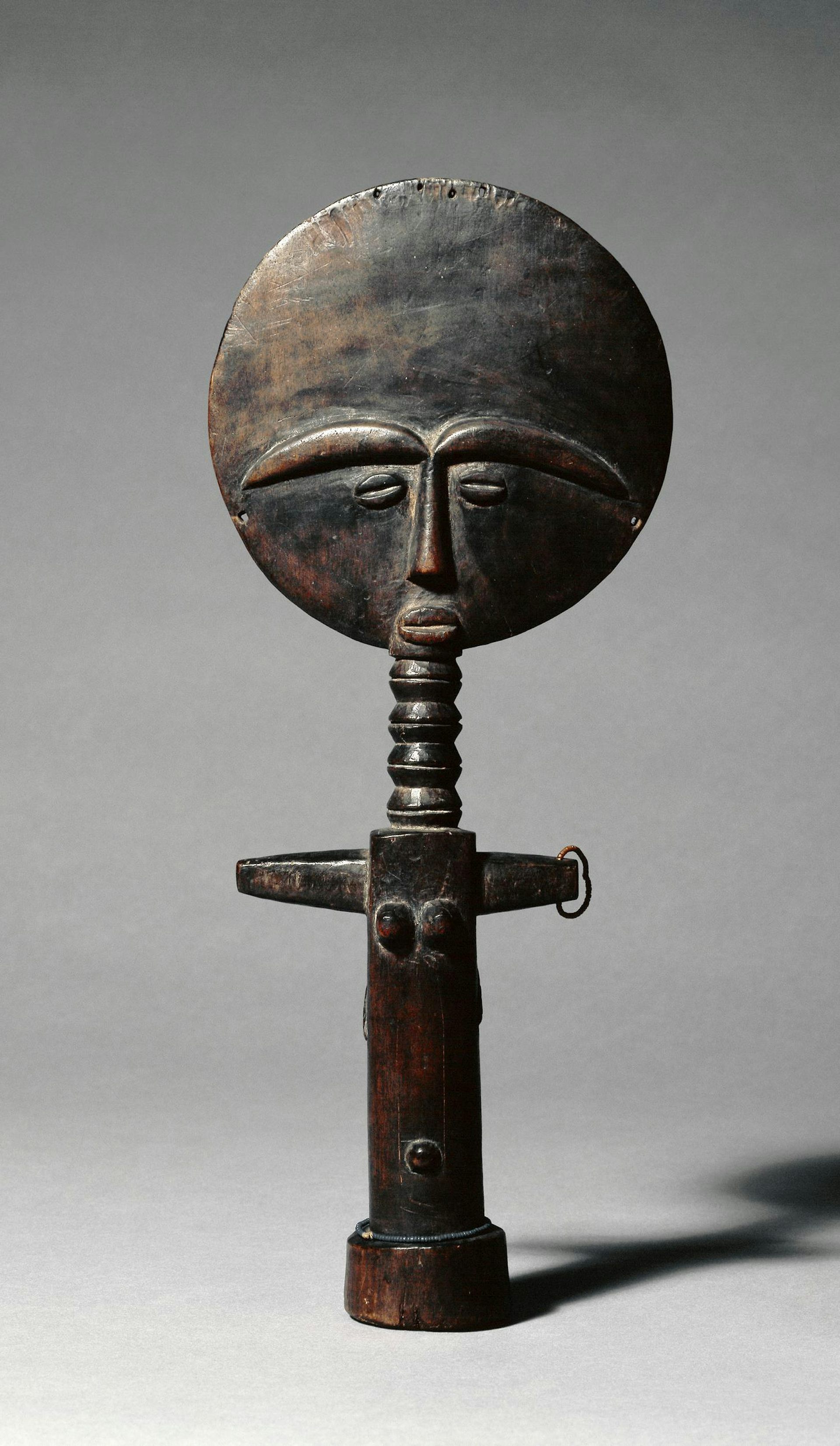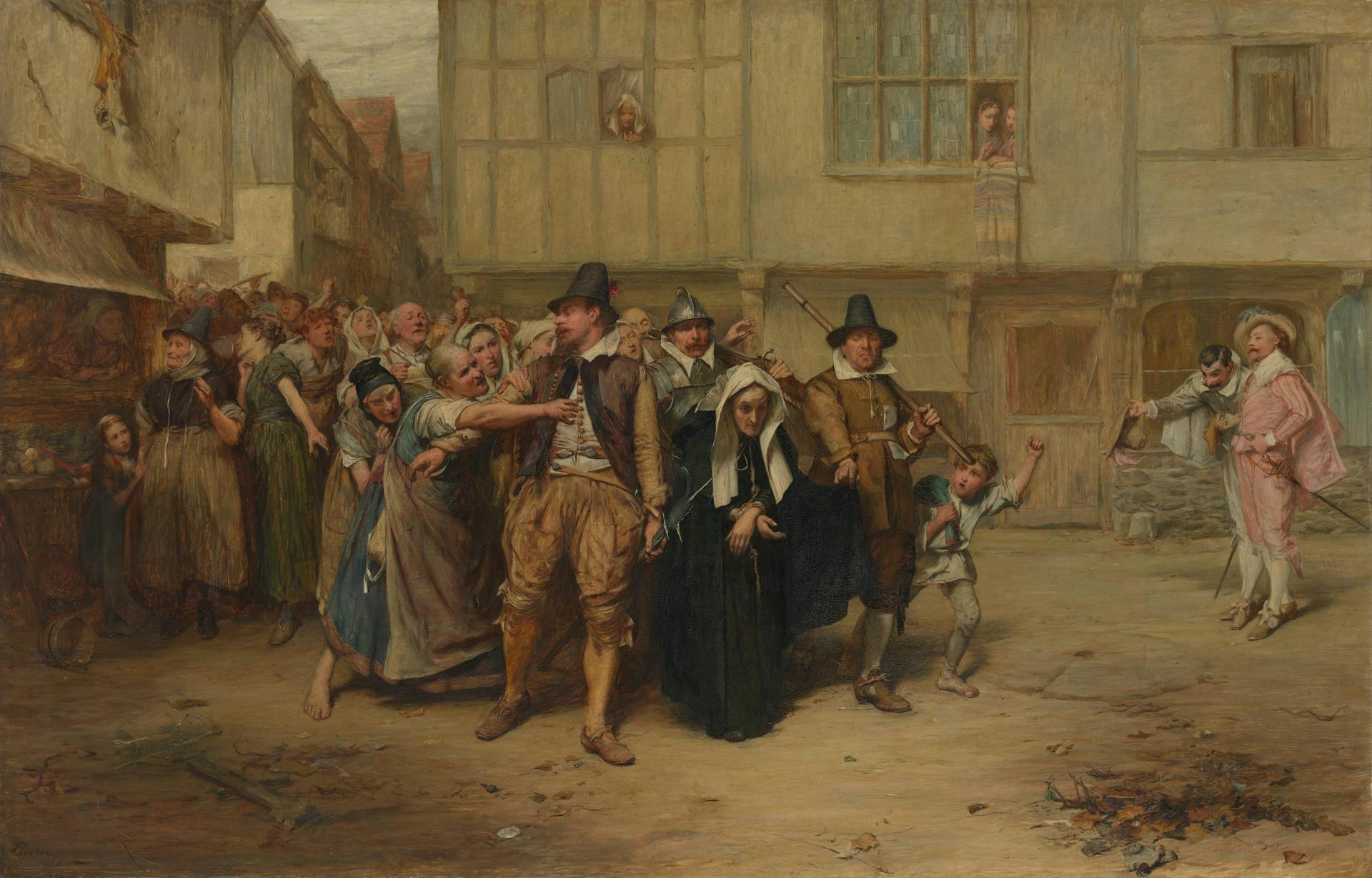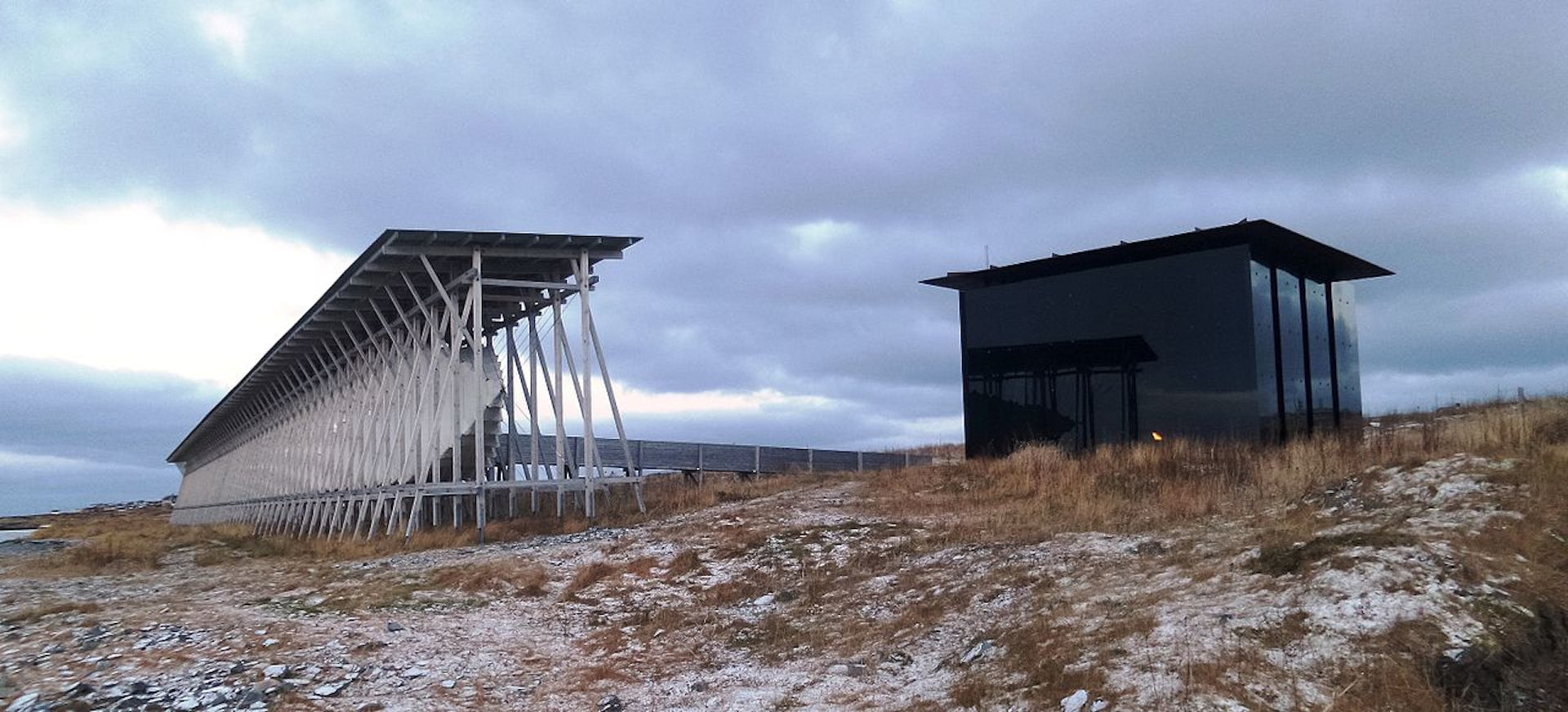‘Witches’ are still killed all over the world. Pardoning past victims could end the practice

A promotional poster for Liberty Gospel Church with Helen Ukpabio, a modern 'witchfinder'(Lady Apostle Helen Ukpabio/Facebook)
The report is the UN Human Rights Council report entitled, Study on the situation of the violations and abuses of human rights rooted in harmful practices related to accusations of witchcraft and ritual attacks, as well as stigmatization(pdf). It paints a shocking picture of what Biblical, mainly, but now wholly, Christian, beliefs and invocations can lead to amongst those who have swallowed the missionary lie that the Bible is the inerrant word of God which should be followed to the letter to achieve 'salvation' from the horrors that the missionaries has told them await those who fail to carry it out.
The problem is that the belief in Biblical inerrancy and a mind-reading, ever watchful god can make people think the barbarity in the Old Testament especially, is the will of God and 'moral' in some arbitrary definition of morality as "what God sez!"
And 'God sez, Thou shalt not suffer a witch to live. (Exodus 22: 18)
And running throughout the Bible is a belief in evil spirits and a world running on magic in which magic words, signs and thoughts can cause bad things to happen. The result is horrendous abuse of vulnerable people and especially of women and children, as the UN report states:
Women and girlsIn the following article, reprinted from The Conversation under a Creative Commons license, Brendan C. Walsh, Sessional Academic, The University of Queensland, Australia argues that we need to give a clear signal that this behavior, though sanctioned by the Bible, is not acceptable in a modern society. Officially pardoning past victims of this abuse would give that signal. His article has been reformatted for stylistic consistency:
- The Committee on the Elimination of Discrimination against Women has noted that in some countries persistent patriarchal norms confine women to their reproductive role and legitimize harmful practices, including the accusation of witchcraft and the social exclusion of women and girls accused of practising witchcraft.50 Reportedly, women who do not fulfil gender stereotypes, such as widows, childless or unmarried women, are at increased risk of accusations of witchcraft and systemic discrimination.51 Other marginalized groups include older women, women with disabilities, mothers of children with albinism, Indigenous women,52 women belonging to minorities and lower castes,53 women of African descent and women of diverse sexual orientations, gender identities, gender expressions and sex characteristics.54
- Research indicates that women are more often subjected to accusations of witchcraft than men.55 Women accused of witchcraft have been subjected to various forms of violence, including being beaten, burnt, stripped naked, raped, mutilated, buried alive and killed. 56 Owing to the grave consequences of such accusations in some countries, it has been suggested that emergency procedures be put in place to rescue and resettle women who are at risk of suffering witchcraft-related violence in their communities.57 In some countries, women have also been detained on grounds of witchcraft or charlatanism, often on the pretext of protecting them from mob justice.58 There are also instances of women, in some countries, who have been sent to “witch camps” through a system that lacks minimal due legal process and from which the possibility of returning to society is uncertain.59
- Several of the root causes of accusations of witchcraft targeting women were outlined during the expert consultation, including patriarchy, cultural beliefs and structural challenges of conflicts and poverty. Participants also discussed other factors related to accusations of witchcraft and ritual attacks. For example, inheritance practices mean that widows and wives in polygamous marriages without children, or without sons, are vulnerable because in many cases the land, house and other properties will pass on to the husband’s sons from other wives or the nearest male relative. Competition over financial resources, for attention, looks or children may trigger accusations of witchcraft and lead to acts of violence as a result of jealousy. Illness and death in the family or local community, as well as other misfortunes, are key factors in triggering accusations of witchcraft against and ritual attacks on women. The arrival of strangers/newcomers in a local community may be another factor. Women’s agency and assertion of rights may also trigger accusations of witchcraft against independent and empowered women.
- Older women accused of witchcraft have been reported to be subject to imprisonment, forced starvation, damaging “exorcism” ceremonies, such as forcing them to ingest hazardous substances, such as cement, and having nails driven into their heads with the objective of extracting confessions of witchcraft and forcing the evil spirit out. In some countries, such women are abandoned by their own children, family and community members and often the State does not provide alternative care facilities.60 Due to extreme fear of witchhunting or reprisal attacks, those labelled as “witches” are exiled to the margins of their communities and forced to remain confined in “safe” spaces, living in deplorable conditions.61
- The Committee on the Elimination of Discrimination against Women has stressed that States should combat all forms of discrimination and violence against older women accused of witchcraft, including intimidation, isolation, abuse and killings, as well as expulsions from their homes and families, and ensure that the perpetrators are prosecuted and adequately punished.62
- Mothers of children with albinism have also been accused of witchcraft for giving birth to a child with albinism.63 In some countries women with albinism have been victims of killings, mutilation, burning, torture and other cruel, inhuman or degrading treatment and stigmatization, as well as sexual violence, arising from the belief that sexual intercourse with a woman or girl with albinism can cure HIV/AIDS.64
- The Committee on the Elimination of Discrimination against Women has emphasized the need to take immediate and effective measures to investigate incidents of violence against and murder of women and girls based on accusations of witchcraft, and prevent their reoccurrence in the future; arrest, prosecute and adequately punish the perpetrators of such cts; strengthen the enforcement of relevant legislation; and criminalize accusations of witchcraft, while repealing provisions criminalizing witchcraft per se.65
- The Committee has also stressed the importance of undertaking public education programmes highlighting the negative impact of accusations of witchcraft, targeting both men and women, as well as community and villages chiefs and religious leaders, and raising awareness, particularly in rural areas, of the criminal nature of such attacks.66 It has also noted the need for special programmes that address the psychological trauma, physical harm, social exclusion and impoverishment of women accused of witchcraft, and allocate adequate resources to victim support structures.67
Children
- The participants in the expert consultation discussed the vulnerability of children to harmful practices resulting from accusations of witchcraft and ritual attacks. Child abuse linked to accusations of witchcraft is a “hidden crime” that is underreported. Such child abuse is not confined to one religion, nationality or ethnic group.70 Cases of children being harmed, abused or killed owing to being accused of being witches or of witchcraft practices have been reported in many countries around the world.71 Estimates suggest that each year in Africa hundreds of thousands of children are victims of accusations of witchcraft and ritual attacks, and consequently suffer grievous human rights violations and abuses. Accusations of witchcraft almost always inflict psychological and physical violence on children, and could inflict further harm, including neglect, homelessness, physical disability and even death.72
- There have also been reported cases of children being accused of witchcraft who are internally displaced, are refugees or are newly arrived refugees in some European countries. In cases of child protection concerns related to accusations of witchcraft, in some refugee camps the affected children and their parents have been transferred to other locations. In that context, it has been pointed out that children accused of witchcraft could be legitimately considered as members of a particular social group at risk of persecution, in a specific country of origin, enabling them to seek asylum in another country.73
- Accusations of witchcraft and ritual attacks cause a number of violations of children’s rights, including torture, abuse, abandonment and even killing, as a result of such stigma and persecution.74 The act of telling a child that they are a witch or possessed by an evil spirit can be also emotionally abusive.75 The Committee on the Rights of the Child has emphasized in two of its general comments that accusations of witchcraft, including “exorcism” constitute harmful practices, violating children’s rights.76
- Children with disabilities, including albinism and those with neurological conditions (epilepsy) or mental impairments (autism, Down’s Syndrome); children whose births were considered unusual (for example, twins); orphans; lesbian, gay, bisexual, transgender and intersex children; children whose families suffered economic or other crises after their birth; children living in foster homes; children who are gifted or exhibiting challenging behaviour; and even children who are thoughtful or withdrawn may be at greater risks of accusations of witchcraft.77
- Recent research identified six distinct forms of violence and/or harm that can result from accusations of witchcraft against children. They include severe psychological harm, physical violence, especially when carried out to elicit a “confession”, corporal punishment, ranging from relatively mild attacks to extreme assaults that cause permanent impairment or death, forcible administration of cleansing “medicines” and procedures, expulsion from family homes and communities, and murder.
- It has been noted that in some countries local communities often do not consider an accused child as the victim. According to local beliefs, the real victim is the person who suffered the detrimental consequences of the act of witchcraft. As soon as a child has been accused of witchcraft, he or she is no longer considered a child, but a witch.78 The act of violence against persons accused of witchcraft is interpreted as socially acceptable not only by the family and the local community, but also by police forces.79
- Accusations of witchcraft often result in “confessions” by the accused victim, hoping to obtain forgiveness and avoid further harm. Children are particularly susceptible to being forced to make false confessions.80 Reportedly, in some cases, children died during activities designed to extract a confession of witchcraft.81 Such “confessions” also make children more vulnerable to, inter alia, physical violence, forcible “administration of cleansing medicines” and abandonment. In some countries, where witchcraft is punishable by law, this could result in children being convicted for practising witchcraft.82
- A child who has been accused of witchcraft remains stigmatized for life, even after being forced to go through various “cleansing” rituals. The child is stigmatized within the family, village or community, depriving him or her of social support. The possibility that he or she will be accused again remains high. Stigmatization and discrimination lead to trauma and psychological and emotional suffering. They also make it more difficult to reintegrate children into families and the social life of the community.83 In some countries, there are significant numbers of children living on the streets owing to accusations of witchcraft, made either by their parents, extended family, neighbours, pastors or soothsayers. After being accused and abandoned, owing to the stigma the children could not return to their school, village or community.84
- The Committee on the Rights of the Child has urged Governments to take effective measures to prevent children from being accused of witchcraft, including strengthening public awareness-raising activities, focusing particularly on parents and religious leaders, and addressing the root causes of the phenomenon, including poverty.85 Community awareness raising is also needed to prevent the “normalization” of violence. For example, there has been a case of a five-year-old boy who killed a one-year-old boy in a ritual killing because he had seen family members do the same thing.86
- The Committee also highlighted the importance, in some cases, of implementing legislative and other measures to criminalize the persecution of children accused of witchcraft and bring to justice persons responsible for violence against and ill-treatment of children accused of witchcraft. The Committee also suggested that recovery and reintegration measures be provided for children who have been victims of such practices.87 In that context, the Committee also highlighted the key roles of civil society organizations and traditional and community leaders in the effective elimination of accusations of witchcraft.88

‘Witches’ are still killed all over the world. Pardoning past victims could end the practice
Brendan C. Walsh, The University of QueenslandIn recent decades, governments the world over have increasingly taken action to address the dark history of witch-hunting. In western Europe, memorials to victims have been erected at sites in Bamberg (Germany), Vardø (Norway) and Zugarramurdi (Spain). Many states have also taken to issuing national apologies, with some even granting posthumous pardons.
The witchcraft exoneration movement isn’t simply about addressing past injustices. Violence directed at suspected witches persists across the world today and, alarmingly, seems to be intensifying.
The 2023 Annual Report of the United Nations Human Rights Council asserts that each year, hundreds of thousands of vulnerable people are harmed in locations such as sub-Saharan Africa, India and Papua New Guinea because of belief in witchcraft.
One 2020 UN report states at least 20,000 “witches” were killed across 60 countries between 2009 and 2019. The actual number is likely much higher as incidents are severely under-reported. These sobering statistics indicate a need for urgent government action.
The exoneration movement
State-issued exoneration for victims of witchcraft persecution isn’t a modern concept. The most notable example was in the aftermath of the Salem witch trials (1692–93), in which at least 25 people (mostly women) were executed, tortured to death, or left to die in jail.
In the decades that followed, the citizens of Salem submitted petitions demanding a reversal of convictions for those found “guilty” of witchcraft, and compensation for survivors. In 1711, Massachusetts Governor Joseph Dudley agreed to these demands.
More recently, many states have moved to recognise and make amends for their historical involvement in witch-hunting. On International Women’s Day 2022, Scotland’s former first minister Nicola Sturgeon issued a national apology to people accused of witchcraft between the 16th and 18th centuries.
In 2023, Connecticut lawmakers passed a motion to exonerate the individuals executed by the state for witchcraft during the 17th century. This motion is the result of grassroots campaigning by descendants and groups such as the Connecticut Witch Trial Exoneration Project.

This witchcraft scene (circa 1770-1799), attributed to Spanish painter Luis Paret y Alcázar, shows three nude figures in a darkened interior, with one holding a skeleton by the shoulders.
Most witchcraft accusations emerged from neighbourly disputes and involved active participation by both the community and authorities. Even when European states ceased persecution in the 18th century, community-level violence continued.
Nonetheless, advocates for witchcraft exoneration projects argue that state pardons are more important than ever, not least because they can help address ongoing witchcraft-related violence.
Why is modern witchcraft violence growing?
Modern witchcraft persecutions are driven largely by religious fundamentalism and are further exacerbated by factors such as civil conflict, poverty, and resource scarcity. Biblical passages such as Exodus 22:18 are clear on the matter: “Thou shalt not suffer a witch to live”.
In particular, the growth of Pentecostalism in developing nations has played a central role in fuelling witch-hunts.
Pentecostal evangelising has effectively demonised many cultural traditions – superimposing a strict religious attitude towards magic onto societies that have long accommodated such beliefs. This is evident in the ongoing crusade led by Helen Ukpabio, founder of the notorious Nigerian church Liberty Foundation Gospel Ministries.
Witchcraft-related violence has also been a growing concern in the United Kingdom, particularly within the African diaspora. One of the most shocking cases was the 2010 death of 15-year-old Kristy Bamu in London.
Bamu was tortured by his older sister and her partner for days, as they believed he was a witch. On Christmas Day, Bamu was forced into a bath for an exorcism, where he drowned. In response to such horrific cases, London’s Metropolitan Police launched The Amber Project in 2021 to address increasing incidents of child abuse linked to belief in witchcraft and spirit possession.
Misogyny has also been a prevalent factor in historical witchcraft prosecutions and remains so today. According to the UN, “women who do not fulfil gender stereotypes, such as widows, childless or unmarried women, are at increased risk of accusations of witchcraft and systemic discrimination”.
Witchcraft accusations are often a means to exert control over the bodies of women and girls, while maintaining male-dominated power structures. Accusations also play a role in human trafficking by making it easier to drive victims out of their communities.
Global witchcraft prosecutions
Belief in harmful magic and/or witchcraft exists across many societies. India has a long history of witch-hunting and continues to be plagued by this terrible injustice. One victim was Salo Devi, a 58-year-old woman from a small village in the state of Jharkhand. In 2023 she was beaten to death by her neighbours for allegedly bewitching a baby.
Papua New Guinea and sub-Saharan Africa are also hotspots for witchcraft-related violence.

This wooden fertility doll ‘akwaba’ was made in Ghana prior to 1914. Such dolls were used as fertility charms since infertility raised suspicions of witchcraft.
The Trustees of the British Museum, CC BY-NC-SA
Cultural beliefs surrounding disabilities and misunderstood conditions such as albinism have also been used as justification for beatings, banishment, limb amputation, torture and murder.
So prevalent is such violence that in 2021 the UN Human Rights Council issued a historic special resolution calling for the “elimination of harmful practices related to accusations of witchcraft and ritual attacks”. This resolution urges member states not only to condemn these practices but also to take action to abolish them.
What can be done?
The UN and numerous non-government organisations are implementing programs to educate communities at risk of witchcraft-related violence. Leo Igwe, a Nigerian human rights activist and director of Advocacy for Alleged Witches, has played a central role in increasing public awareness of this violence. More voices like his are needed. At the same time, increased recognition is only the beginning.
The UN has issued numerous denouncements and a few states have introduced anti-witchcraft bills. Additional legal protections, multi-agency task forces and national apologies will help bring more attention to this pressing issue.
Above all, it’s necessary to address the beliefs and motivations that underpin witchcraft accusations. By doing so, we can reverse the alarming rate of witchcraft-related deaths recorded each year.
This article is republished from The Conversation under a Creative Commons license. Read the original article.
And bear in mind, that this Talibangelical-style fundamentalist theocracy is exactly what the US far-right Christian nationalists are aiming for, supported and encouraged by Talibangelist Baptists, who are hoping for a share in the unaccountable power and freedom to bully and abuse, it will give them.
Ten Reasons To Lose Faith: And Why You Are Better Off Without It
This book explains why faith is a fallacy and serves no useful purpose other than providing an excuse for pretending to know things that are unknown. It also explains how losing faith liberates former sufferers from fear, delusion and the control of others, freeing them to see the world in a different light, to recognise the injustices that religions cause and to accept people for who they are, not which group they happened to be born in. A society based on atheist, Humanist principles would be a less divided, more inclusive, more peaceful society and one more appreciative of the one opportunity that life gives us to enjoy and wonder at the world we live in.
Available in Hardcover, Paperback or ebook for Kindle







The Medieval period is coming back. Ignorance, superstition, and barbarity has resurfaced. The Witch Hunts are back on a smaller scale.
ReplyDeleteThe Malleus Maleficarum is a book on how to deal with suspected witches. It also allows and sanctions torture and killing of anyone even suspected of being a Witch. These Witch hunters were more demonically possessed than the people they executed! Hanging, burning alive, and pulling the joints of witches were all accepted forms of torture and execution. Witchcraft may be evil and sinful, but these Christian Witch hunters forget that torturing and killing are also evil and sinful. Such is the hypocrisy of the Bible and its God. This God contributes to the evil and contributes to the sin in the world which He supposedly hates so much. It's a God who refuses to heal and who refuses to forgive His creation. All He knows how to do is punish, punish, punish. He has no intelligent, constructive solution to offer us. Allow the sin, punish the sin, Allow the sin, punish the sin is His motto. He would rather punish His creation than heal it. He doesn't know how to heal. Why do people become witches in the first place? Why do people turn to the Devil and demons in the first place? If this God really cared about His children then He would be providing for our needs. Instead we have a disconnected God who doesn't provide, doesn't protect, doesn't help, doesn't heal, and doesn't answer His creation. That's why many people turn to Satanism, pagan religions, and phony religions. It doesn't seem to occur to this God that He ought to take better care of His creation. He doesn't know how to be a good creator, He doesn't know how to be a good deity, and He doesn't know how to be a good God. This is a stupid, insane, cruel way of running a creation. It's ungodly, un godlike behavior. Someone should tell this God If you're really an omnibenevolent, omnipotent, omniscient, loving, merciful, caring God, then why don't you START acting like it? If He really is God, then He should start acting like one and He should start healing this broken creation. It's not going to heal by itself. Start healing human nature and start healing Nature. The whole creation needs a do over and a reset. There's no Superman to save us. There's no superhero to save us. That's why the world continues to be the hellhole that it is.